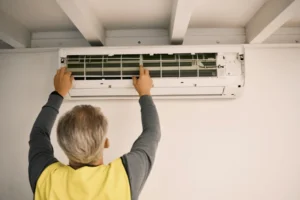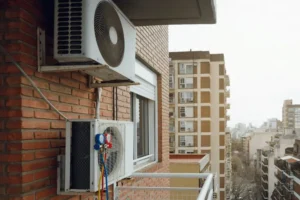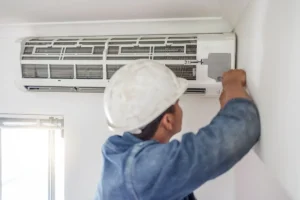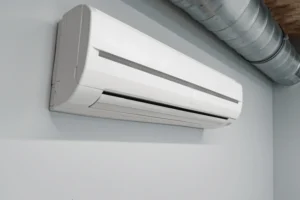
Ductless heat pumps are becoming an increasingly popular choice for homeowners in Ottawa who want an energy-efficient, flexible, and cost-effective solution for heating and cooling their homes. Unlike traditional HVAC systems that rely on ductwork, ductless heat pumps use a series of indoor air-handling units connected to an outdoor compressor via refrigerant lines. This design allows for precise control over individual rooms or zones, making them ideal for homes without existing ducts, home additions, or areas where running ductwork would be complicated or expensive.
Estimating the budget for a ductless heat pump installation requires understanding not just the equipment costs but also installation labor, electrical upgrades, permits, and possible rebates or incentives. This guide provides an in-depth look at all factors that influence the overall cost and offers a framework for calculating your budget effectively.
Understanding Ductless Heat Pump Systems
Before diving into costs, it’s important to understand the basic components of a ductless heat pump system:
- Outdoor Compressor/Condenser: This unit absorbs and releases heat depending on whether you are heating or cooling.
- Indoor Air-Handling Units: These units, mounted on walls or ceilings, blow the conditioned air into rooms and allow individual temperature control.
- Refrigerant Lines: These connect the indoor and outdoor units and transfer heat between them.
- Remote or Smart Controls: Many systems now include app-based or smart thermostats for convenient operation.
Zoning Capability is one of the biggest advantages of ductless systems. Each indoor unit can operate independently, allowing for tailored comfort in every room and preventing energy waste in unoccupied areas.
Average Installation Costs in Ottawa
The cost of installing a ductless heat pump in Ottawa varies depending on factors such as system type, number of zones, brand, and complexity of installation. Below is an estimated cost breakdown:
| System Type | Typical Cost Range (CAD) |
| Single-Zone | $3,500 – $5,500 |
| Multi-Zone | $6,000 – $12,000+ |
| High-Efficiency Models | $10,000 – $15,000+ |
Key Notes:
- These ranges generally include the heat pump equipment, basic installation, and minor electrical work.
- Additional costs may arise for homes requiring extensive electrical upgrades, wall modifications, or complex placements of indoor units.
Factors That Influence Installation Costs
Several factors can significantly affect your total budget:
1. Number of Zones
Each indoor unit added for a separate zone increases both the equipment cost and labor. Single-zone systems are ideal for small areas or individual rooms, while multi-zone systems are required for whole-home comfort.
2. System Efficiency
High-efficiency models, especially those designed for cold climates like Ottawa, are more expensive upfront but provide long-term savings through reduced energy bills. Look for systems with high SEER (Seasonal Energy Efficiency Ratio) and HSPF (Heating Seasonal Performance Factor) ratings.
3. Electrical Work
Older homes may need upgrades to the electrical panel or additional circuits to accommodate the new system. These upgrades can add hundreds or even thousands of dollars to the total cost.
4. Installation Complexity
Difficult installation conditions, such as thick walls, tight spaces, or long distances between indoor and outdoor units, can increase labor costs.
5. Permits and Inspections
Some installations require building permits, electrical permits, or inspections in Ottawa. Always check local regulations to avoid fines or delays.
Available Rebates and Incentives
Ottawa homeowners can reduce their out-of-pocket costs through rebates and incentives:
- Canada Greener Homes Grant: Offers up to $5,000 for energy-efficient home improvements, including ductless heat pumps.
- Ontario Energy Rebates: Provides incentives for energy-saving installations.
- Municipal Programs: Some local programs offer additional financial support for energy-efficient upgrades.
Rebates often require pre- and post-installation evaluations and proper documentation, so working with a licensed contractor familiar with these programs is recommended.
How to Estimate Your Budget
Here is a step-by-step method to calculate your estimated budget:
- Determine System Type: Decide between a single-zone or multi-zone system based on your home’s layout and comfort needs.
- Assess Home Size: Larger homes require more indoor units, increasing costs.
- Decide on Efficiency Level: Cold-climate models cost more but provide better heating performance in Ottawa winters.
- Account for Additional Costs: Include electrical upgrades, permits, wall modifications, and potential labor complexity.
- Apply Rebates: Subtract eligible incentives to arrive at your final estimated cost.
Sample Budget Calculation
For a typical 2,000 sq. ft. home with 3 zones:
- System Cost: $8,000
- Electrical Upgrade: $1,000
- Permits and Fees: $300
- Rebates: -$2,000
Estimated Total: $7,300
This is a realistic example for a mid-sized Ottawa home, demonstrating how multiple factors contribute to the final cost.
Optimal Installation Timing
Timing your installation can impact both availability and cost:
- Spring and Fall: Lower demand allows contractors to schedule installations faster and may include off-season discounts.
- Milder Weather: Easier installation conditions reduce the risk of delays or complications.
Avoiding the peak summer or winter months can help homeowners secure better rates and faster scheduling.
Choosing the Right Installer
The success of your installation depends heavily on choosing a qualified HVAC contractor:
- Licensing and Insurance: Ensure the installer is fully licensed and insured.
- Experience: Look for technicians experienced specifically in ductless heat pumps.
- References and Reviews: Check past customer reviews and ask for references.
- Quotes: Obtain multiple quotes to compare pricing, warranties, and service offerings.
A reputable installer will also guide you through rebate applications and ensure your system operates efficiently after installation.
Long-Term Savings
While ductless heat pumps involve a significant upfront investment, they provide long-term financial benefits:
- Lower Energy Bills: These systems are highly efficient, often reducing heating and cooling costs by 30-50% compared to older HVAC systems.
- Increased Home Value: Energy-efficient systems make homes more attractive to buyers.
- Durability: With proper maintenance, a ductless heat pump can last 15–20 years, ensuring value for years to come.
Maintenance Considerations
Regular maintenance is key to preserving system performance:
- Clean or Replace Filters: Every 2–4 weeks during heavy usage.
- Inspect Indoor and Outdoor Units: Remove dust, debris, or leaves from the outdoor compressor.
- Check Refrigerant Levels: Low refrigerant affects heating and cooling efficiency.
- Professional Inspection: Annual service checks ensure longevity and optimal performance.
Routine maintenance not only extends system life but also maintains energy efficiency.
FAQs
What is the average cost of installing a ductless heat pump in Ottawa?
The average cost ranges from $3,500 to $12,000, depending on system type and home size.
Are there any rebates available for ductless heat pump installations?
Yes, homeowners may qualify for the Canada Greener Homes Grant and other provincial incentives.
How long do ductless heat pumps typically last?
With proper maintenance, they can last between 15 to 20 years.
Can I install a ductless heat pump myself?
Installation requires professional expertise due to electrical and refrigerant handling. DIY installation is not recommended.
When is the best time to install a ductless heat pump in Ottawa?
Spring and fall are ideal due to lower demand and milder weather conditions.
Final Thoughts
Estimating your budget for a ductless heat pump installation in Ottawa requires careful consideration of system type, home size, efficiency, installation complexity, and potential rebates. By understanding all these factors and working with a licensed installer, homeowners can plan their investment wisely and enjoy the long-term benefits of enhanced comfort, energy efficiency, and cost savings.
First, system type plays a major role in cost estimation. Single-zone systems are typically less expensive, making them ideal for small apartments, individual rooms, or areas where only one space needs consistent heating and cooling. Multi-zone systems, on the other hand, are designed for larger homes with multiple living areas or bedrooms. Each additional zone requires its own indoor unit, which increases both the equipment and installation costs. When budgeting, it’s important to evaluate which areas of your home will benefit most from a heat pump and whether you truly need a multi-zone system or if a combination of single-zone units could suffice.
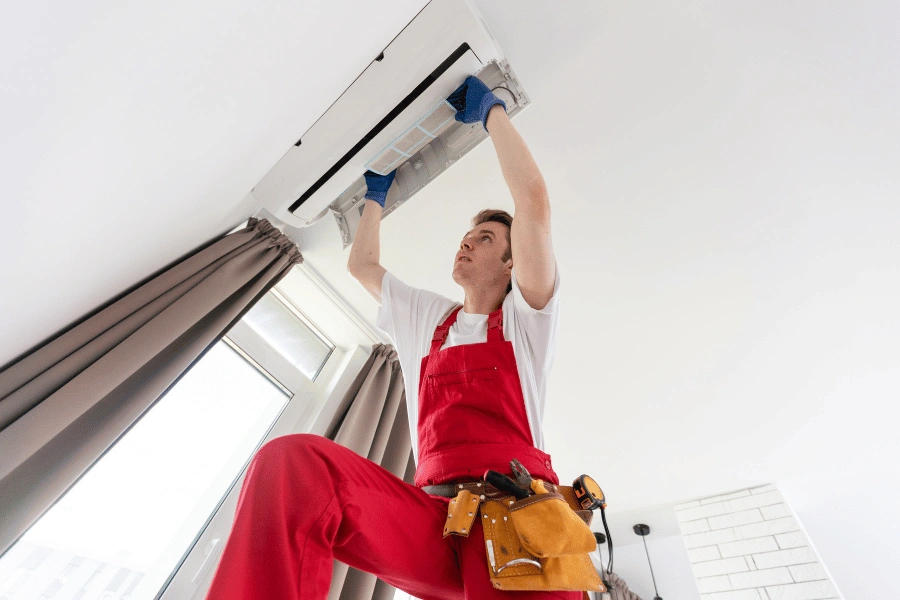
Next, home size directly impacts the number and capacity of units required. Larger homes demand more powerful systems or additional indoor units to ensure even temperature distribution. Proper sizing is crucial; an undersized system will struggle during extreme Ottawa winters, while an oversized system may cycle on and off too frequently, reducing efficiency and lifespan. Consulting with a professional installer to perform a load calculation can ensure you select a system that matches your home’s heating and cooling demands accurately.
System efficiency also affects both the initial investment and long-term operating costs. Units with higher SEER and HSPF ratings tend to cost more upfront but deliver superior energy savings over time. In Ottawa’s cold climate, investing in cold-climate heat pumps designed for sub-zero temperatures can prevent reliance on supplemental heating sources, which further reduces your monthly energy bills.
Installation complexity is another factor that can influence the overall budget. If your home requires additional wall modifications, longer refrigerant line runs, or specialized mounting solutions, the labor costs can increase. Older homes may also need electrical panel upgrades to support the system safely, which should be factored into your planning.


